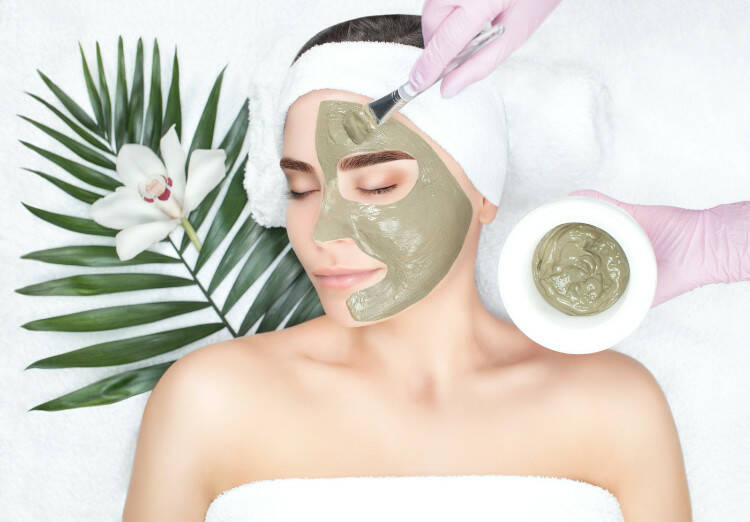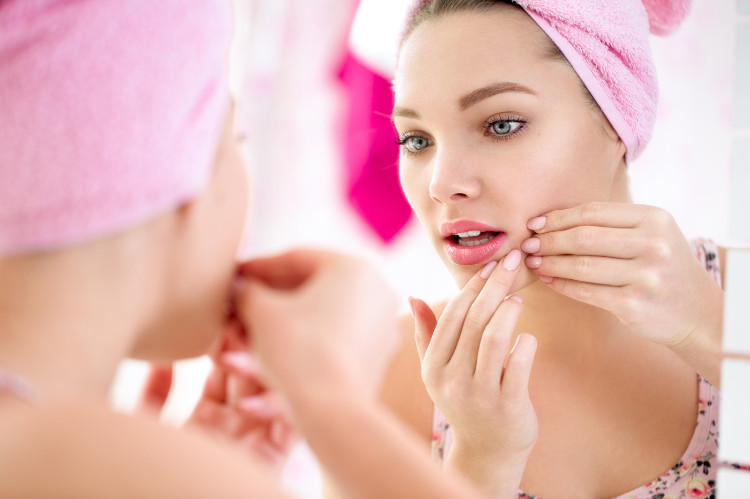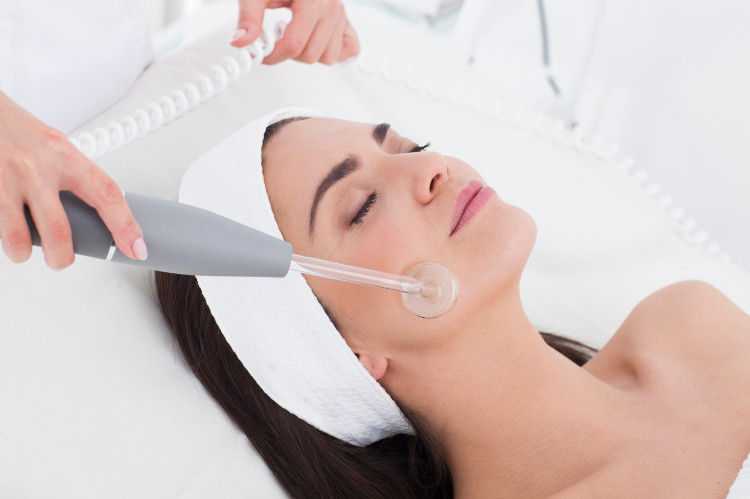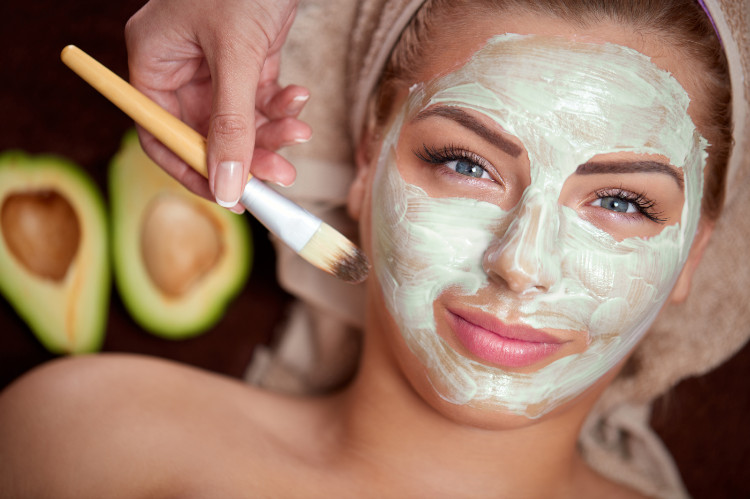Home treatment for acne? How to get rid of it with the best natural recipes

There is no person who has not been plagued by acne at least once in his lifetime. This inflammatory disease of the sebaceous glands occurs predominantly at a young age, namely during puberty.
Article content
Acne has plagued people of all generations for as long as mankind has been around. In that time, many herbs, extracts and remedies have been tried and tested, some of which have proven their worth and are still in use today.
In some individuals it has only mild forms, in others severe forms with scarring, and in a handful of unlucky individuals it persists beyond the age of 30.
Acne makes a person's life uncomfortable through pain, but mainly through unaesthetics.
It can significantly undermine an individual's self-esteem.
In today's modern times, we have a wide range of acne methods and treatments to choose from. For some, home recipes are sufficient, and have helped more than one unfortunate person. For more severe or persistent forms of inflammation, drug therapy or corrective treatment is better.
What is acne and how does it arise?
Acne is a widespread inflammatory skin disease affecting mostly young people, with an increased incidence during puberty. Many factors are involved in its occurrence, which is why it is sometimes referred to as a polyetiological disease (a disease with multiple causes). However, the causes of each may be different and combined in different ways.

The most common causes of acne:
- Hereditary factors (difficult to control)
- hormonal influences (puberty, menstruation, pregnancy, menopause)
- overproduction of sebum
- bacterial infections of the skin
- mycotic skin infections
- poor hygiene habits (in socially disadvantaged groups)
Forms (stages) of acne
The various forms of acne are actually stages of acne. The mildest forms are comedones, which may progress. Inflammation occurs around them, with pustules filled with pus and abscesses. The most severe forms are characterised by the formation of cysts (initially sporadic, later polycystic formations) and the appearance of all stages of acne, which can be observed on the skin simultaneously.
- Acne comedonica - This is the mildest form of acne, where comedones form on the skin. Their formation is due to cornification disorders within the follicles (hair/hair follicles). Hyperkeratosis (excessive cornification of the cells) causes the follicles to become clogged. This is externally observed as black dot-like formations that can be pushed out.
- Acne papulopustulosa - Comedones may become inflamed together with sebum and due to the action of micro-organisms (mostly bacteria). The area around the comedone becomes red, slightly swollen and painful. At the same time, papulose (blister-like) formations are formed or develop, which are filled with pus. Visually, it is a typical painful rash of a circular shape. The outer part is deep pink to red and the centre is dominated by a white-yellow blister.
- Acne indurata - This is a more severe form of acne and a continuation or progression of acne papulopustulosa. The pustules form nodules of a harder consistency that are hard to the touch and brown to reddish in colour. They soften over time with the subsequent formation of abscesses.
- Acne abscendens - After the acne indurata has softened, a skin abscess is formed in this localization, which reaches larger dimensions. It is very painful, protrudes significantly above the skin surface and its contents are septic - formed by pus. Its removal is often difficult. It is removed surgically by puncture or incision and evacuation of the purulent deposit. Improperly treated abscesses leave unsightly scars.
- Acne cystica - Their insidiousness lies in the formation of cystoid formations, which are embedded in the deeper layers of the skin. Therefore, the most appropriate method of removing cysts is a small surgical procedure by incision and evacuation of the cyst.
- Acne conglobata - This is the most severe form of acne of all. Along with it, comedones, blisters, abscesses, cysts and scars from previous acne are usually observed on the face, but also on other parts of the body.
- Acne fulminans - This is a general condition where the patient has, in addition to unpleasant rashes, also elevated temperatures, joint pain and swelling
The best home recipes in acne treatment
Nowadays, there are various treatment options for acne. It is a fairly well-known and in the vast majority of cases, a well solvable problem. Due to the multifactorial causes of its occurrence, proper treatment requires an individualized approach to the patient.
Modern therapy can sometimes be quite costly depending on the specific needs of the patient. Fortunately, there is another option that is economically accessible to almost everyone.
We are talking about medicinal sources of acne directly from nature. These herbal miracles could be called an equal partner of modern options. The main principle of therapy is to minimize the increased cornification of the skin, to treat already formed comedones and inflammatory processes, to reduce excessive sebaceous secretion.

Skin cleansing
Lemon juice - It is full of vitamins and especially vitamin C. It acts antibacterially, cleanses the face, tightens the pores and provides the skin with perfect nutrition and hydration. It also acts as a chemical peeling, as it removes dead skin cells caused by hyperkeratosis.
Wine vinegar - It is suitable for cleansing the skin in the morning and evening. It contains minerals, acetic acid and enzymes that help in fighting the destruction of bacteria and fungi. It thoroughly rids the skin of impurities and tones it. The latter acts and also makes it healthier and more rested.
Australian Tea Tree - It is a well-known oil that destroys microorganisms and has anti-inflammatory properties. When diluted with water, it is suitable for thoroughly cleansing the skin, ridding it of bacteria or fungus. Among other things, it smells pleasant, refreshes and revitalizes tired skin.
Homemade scrub
Peeling is one of the methods of removing the dead, keratinized layers of skin that occurs in hyperkeratosis. At the same time, it is used to gently massage the affected part of the skin in circular motions to increase blood circulation (never by force or pressure).
This basic skin treatment should be applied no more than once a week (no more) in order to have the face or other part of the body ready for the next steps. After the peeling, the skin is as if reborn, looks younger, healthier and is brighter. In case of very damaged skin, apply it after it has healed, so as not to spread infection from poorly healed or septic deposits.
Honey scrub with coffee beans - The beneficial effects of this golden, viscous liquid are not unknown. Honey has many attributes such as food of the gods, potion of life, liquid gold or healing miracle. And it deserves them. It has healing and anti-inflammatory effects. It promotes healing, prevents suppuration and softens.
The honey scrub is very simple to prepare. Add freshly ground coffee beans or ground oatmeal to the honey (you can also mix it with egg white). Mix and apply to the face with gentle circular movements.
Green Tea Peel with Lemon Juice - All we need is one bag of good quality green tea which we tear. Mix the bag with either a little water or a small amount of lemon juice. Green tea contains bioflavonoid which has antibacterial and detoxifying properties.
Some sources also talk about its anti-cancer effects. Combined with lemon, which also has antibacterial effects and a high amount of vitamin C, it helps in the treatment of acne. Lemon itself acts as a chemical peel and closes enlarged pores.
Lemon peel with salt minerals - Lemon juice as a chemical peel and a source of vitamin C combined with salt crystals helps to sufficiently remove dead skin layers and provides the skin with the necessary vitamins and minerals. However, it is not recommended to use it regularly as it may over-dry the skin. This is also a risk if it is not rinsed off properly after this type of peel.
Caution:
On the Internet, you can find homemade recipes for face masks with yoghurt, milk or cottage cheese. In this case, increase caution. Dairy products contain live cultures (yeast and bacteria), which can aggravate the bacterial process of acne-prone skin. We should also limit their intake in the diet.
Steaming speeds up treatment
Everyone uses this technique from time to time for colds, flu, viruses, stuffy noses and sinusitis. Inhaling the vapours of salts and medicinal herbs has been used by our grandmothers. However, people only have this technique fixed in connection with colds.
The hot vapours, however, by their very temperature, blood the treated part (usually the face), open the clogged pores and allow the medicinal substances to penetrate deeper into the skin.

Burdock - Its beneficial effects were already known to our ancestors 1500 years ago. Its effects are detoxifying and anti-inflammatory. Among herbs, it is the number one in the treatment of inflammatory skin diseases.
It relieves and heals inflammation, soothes the affected part of the body, "draws out" pus, reduces swelling and thus pain.
It can be used in the form of steaming and inhalation, internally and in the form of moist compresses on the affected areas.
Stinging nettle - This plant has strong detoxifying properties. People in the past have said it cleanses the blood, which is ultimately true. Stinging nettle is well known as a hair growth stimulant, but it also helps in the treatment of skin diseases and wounds that heal.
It contains a higher amount of vitamin C than lemon and also has an analgesic (pain-relieving) effect. Not only in the past, but even today its analgesic effect is used in the treatment of rheumatic pains.
Chamomile - Even as a child, we used to pick tiny white flowers with a yellow centre in the meadows and our grandmothers used them to make tea. We are talking about chamomile. It has a strong detoxifying, antiseptic and even antibiotic effect.
Among other things, it helps in the treatment and early healing of wounds or skin diseases. It relieves soreness, swelling, and even eliminates scarring. Therefore, if you have acne problems, you should use it externally, but also internally.
Green tea - It is a product of the Chinese tea tree. It is mainly known to those who struggle with obesity.
However, this is far from its only positive. One of its types is called matcha, which is 13 times stronger than regular green tea. Other subcategories are sencha, bancha and kukicha. Anyway, they are detoxifying, antiseptic, anti-cancer and slow down the aging process.
Lapacho tea (South American oak) - It is also known as a panacea because it has a positive effect on all organs and parts of the body. People have been drinking it for many years for the treatment of various diseases, but also as a preventive measure.
It is known for its detoxifying, antibacterial, antifungal, antibiotic, as well as anticancer effects. You can use its vapors when inhaled and steamed to treat acne. You can use it internally or in the form of poultices. More often than the leaves, the bark of the lapacho tree is used where available.
Face masks
Facial masks are used to moisturise and nourish the skin. They supply the skin with essential substances and vitamins. They are applied to the face using a brush to spread them evenly. The delicate skin around the eyes is omitted. They are left on for about 10 to 15 minutes to give the substances in the mask enough time to penetrate the skin.
The mask is then rinsed off with clean water.

Honey and Cinnamon Mask - Honey and cinnamon have detoxifying and anti-inflammatory effects that are multiplied when combined. Cinnamon contains vitamin A, B6, magnesium, iron, calcium and fiber.
Honey contains a B-complex, vitamin C, D, E, organic acids, amino acids, enzymes, aromatics and antioxidants. Together they create a unique blend that provides a broad spectrum of vitamins, destroys microorganisms on the skin's surface, and softens, softens and revitalizes stressed skin.
Coconut Mask - Commonly available coconut oil is known for its wide range of uses.
In the treatment of acne, lauric acid is an indispensable ingredient. It is anti-inflammatory and healing, thus helping to treat skin diseases. Vitamins and fatty acids, in turn, help to nourish the skin and provide it with the necessary substances. Coconut oil can be used as a mask on its own, or you can add a few drops of lemon juice, especially if you have a problem with enlarged pores that tighten.
Topical acne treatment
Topical or local treatment means that we don't apply a specific product, herb or tincture to the whole face, but only to the pimple. The aim is to heal and dry the specific area, where the medicinal substances act in increased concentration and do not stress undamaged parts of the skin.
Garlic - It has detoxifying, antiseptic, antifungal, anticancer and antibiotic properties. Garlic contains thiosulfinates, which act as a natural antibiotic. They kill microorganisms with even greater effectiveness than the drugs we commonly know today. It was already used in the past before the discovery of penicillin by Fleming.
Garlic also contains allicin, which reduces swelling and redness with its anti-inflammatory effect. These two substances will get rid of acne. Thiosulfinates destroy bacteria and allicin reduces inflammation and shrinks the pimple. Just use a little garlic juice rubbed on a specific spot or a cut slice applied to the rash.
It is not recommended to rub garlic all over the face. The substances in garlic are so strong that they can cause burns on healthy skin.
Onion - Like garlic, it has detoxifying, antiseptic and antibiotic properties. It is advisable to use fresh onion or its juice in the treatment. Delayed chopped onion loses its effects after 24 hours and can have negative or even toxic effects on a person.
It is effective against skin inflammations ranging from acne to serious ulcerative diseases. It reduces inflammation, draws out pus, heals wounds, and even prevents subsequent scarring, whether from rashes or other diseases and skin problems. It is also suitable for inflamed wounds after an accident.
It is also applied only to the affected area with onion juice or a fine slice applied to the wound.
Tomato - Perhaps for some a rather unfamiliar practice in acne treatment. Others, on the other hand, know very well what it is all about. Tomato has been used for topical acne treatment for a very long time.
The best way is to apply the inside of the tomato skin to the problem area. It contains a lot of vitamins, minerals and antioxidants that purify. It is also known for its astringent effect. It tightens the pores, so its pulp is also suitable as a face mask for people who have a problem with blackheads.
It also has a beneficial effect against skin aging, smoothing and brightening the skin overall.
White Lily - This fragrant flower, i.e. its leaves, are used as an ingredient in many creams. Lily leaves are mainly known to old people who used to put them in glass bottles of alcohol, store them and use them when needed for various injuries, skin diseases or burns.
Lily leaves regenerate the skin, have a beneficial effect on sunburn and local burns. They heal wounds, ulcers, skin diseases, bedsores and even herpes. They are also useful for allergy sufferers for skin allergies and bee stings.
You can use fresh lily leaf, juice of the leaf or the leaf soaked in alcohol.
Good advice in conclusion

Sometimes it's more important than doing what's right not to do what's wrong. People tend to push acne out, which is fundamentally wrong.
It is important to remember that a rash is actually an inflammatory process and a boil is full of bacteria. Applying pressure will only achieve that the infection will spread both deeply and into the surrounding area. The same will happen if we puncture the ulcer.
Another fundamental mistake is to constantly touch and scratch the face, thereby spreading the infection and prolonging the healing of the inflammatory process. By doing this incorrectly, we can end up with scars that might not otherwise have occurred.
- Do not touch!
- Do not squeeze!
- Do not puncture!
- Don't scratch!
- Treat gently!
- Hygiene!
Related










